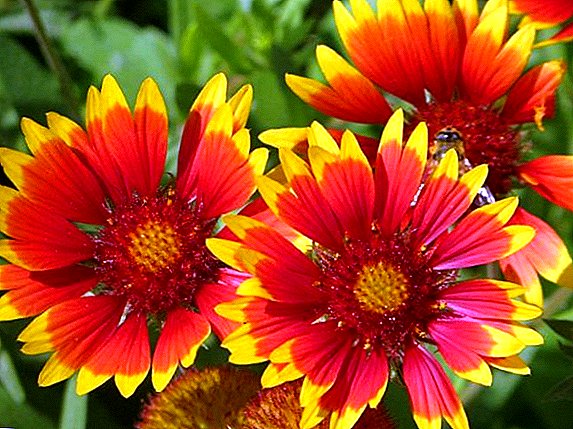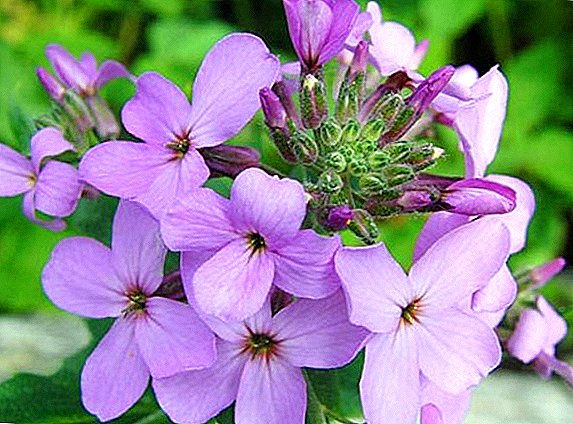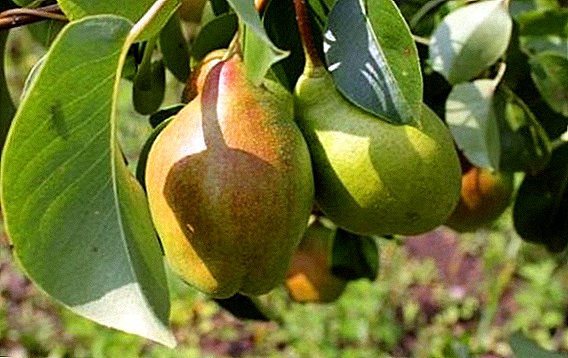 Calicant blooming - a charming plant that has an amazing aroma. The native land of the ornamental shrub is considered to be North America, where it is called "Jamaican pepper". Today we will find out whether it is possible to grow such fragrant beauty in our climatic conditions, and what knowledge and skills will be required for this.
Calicant blooming - a charming plant that has an amazing aroma. The native land of the ornamental shrub is considered to be North America, where it is called "Jamaican pepper". Today we will find out whether it is possible to grow such fragrant beauty in our climatic conditions, and what knowledge and skills will be required for this.
Description
The scientific name of this plant is Calycanthus floridus. The shrub can reach a height of 2-4 m, it has a very spreading crown of olive-colored shoots, decorated with large light green leaves 5-15 cm long and oval in shape. Young leaves are characterized by thick pubescence, which later remains only on the lower part, and the upper side becomes smooth and acquires a gray-green tint.
In June-July, large, burgundy-colored flowers appear on the shrub that exude a spicy scent. At the end of flowering on the plant ripen jug-shaped fruits 5-7 cm in diameter, filled with seeds. In the fall, the leaves of Calicant take on a yellow or yellow-brown color. 
Did you know? Rafflesia is considered the largest flower on Earth. Arnold Its buds grow to 1 m in diameter, and their weight - about 7 kg. But the aroma of this plant can not be called pleasant, because it smells of rotten meat and can only attract flies.
Gallery
It is better to see Calicant blooming in the photo once than to describe this handsome man for a long time with words. It is a pity, the flavor can not be transferred.  Calicant blooming
Calicant blooming  Calicanth flowering shrubs
Calicanth flowering shrubs  Calicante bloom
Calicante bloom  Calicant blooms fade
Calicant blooms fade  Calicant Fruits
Calicant Fruits  Calicant seeds
Calicant seeds  Calicant Chinese
Calicant Chinese  Calicanth Venus
Calicanth Venus  Calicante athens
Calicante athens  Calicant Hartlage Wine
Calicant Hartlage Wine
In an effort to beautify the site beautiful shrubs should consider juniper, mock orange, hydrangea, lilac, viburnum, honeysuckle, tseanotus, mussendu, pyracantha, broom, Kerry Japanese, cotoneaster, Nandini, wintergreen, Spiro, Pieris, sumac, camellias, rhododendrons, mountain ash, bougainvillea, witch hazel, geyheru, liatris.
Plant Care
Calicant grows well in our climate and is able to easily endure even the most severe winters. Naturally, he needs to create certain conditions for comfortable growth, and which ones - we will now consider with you.
Lighting
Blooming calicant loves well-lit places, but at the same time it will be better to plant it in such a way that at midday the plant will appear in the shade or in the penumbra.
It is allowed to plant shrubs next to trees with a rare crown - this will allow the plant to receive the right amount of light and protect it from direct sunlight.
Important! Absolute shadow is not the best option for planting a plant, because there it may not bloom.
Temperature
The shrub grows well in both hot and cooler regions. It is necessary to choose a place for him depending on the climatic conditions in which the planting is supposed: in the southern areas it is necessary to give preference to shaded areas, and in the northern areas - to boldly plant it in the open sun.
The soil
Of course, fertile and nutritious substrates are in priority, but this plant is quite tolerant to the composition of the soil, therefore it can grow and develop perfectly on clay and sandy soils. A prerequisite for favorable growth and development of the plant is a drainage layer, not less than 20 cm.
Learn about the properties of different types of soil and how to make a site drainage.
Watering
The plant must be moderately watered: the soil around the shrub should be wet, but in no case should not be overwetted. In hot, dry weather, irrigation intensity increases as the soil dries.
Did you know? On the island of Java, a keppel tree grows, having tasted the fruits of which, a person begins to exude a scent of violets. Local residents, they replace perfumery products.
Humidity
To retain moisture, it is recommended to mulch the ground around the shrub. You can use sawdust, peat and foliage. Mulch will retain water and protect calicant from drying out.
On hot days, it will not be superfluous to spray his crown with purified water - this will help the leaves to get enough moisture, protecting them from drying out and yellowing. 
Top dressing
It is necessary to fertilize the shrubs in early spring, with organic fertilizers or mineral supplements.
Pruning
Experts recommend the first pruning immediately after planting. Calicant tends to grow strongly, due to which it takes on a not too neat appearance. But this can be avoided if initially form the plant.
Then pruning is carried out after flowering - this removes dried and damaged branches, as well as pinching young shoots.
Wintering
Calicanth refers to winter-hardy plants. It absolutely freezes frost to -30 ° C. Experienced gardeners recommend, despite the high resistance to frost, to cover the bushes with spruce branches - this will protect them from strong winds and precipitation that can damage the branches.
Find out what to plant along the fence, what bushes are suitable for a hedge, how to care for a hedge.
Breeding
Multiply shrubs can be in several ways that have their own characteristics.
Cuttings
Branch cuttings are best combined with sanitary pruning plants. Young and healthy branches are suitable for this. They are cut with a knife or pruner, cleaned and placed in the solution "Kornevina". A day later, the cutting can be planted in open ground or greenhouse. It is necessary to water the sapling regularly and abundantly so that it will take roots faster.
Seeds
Another option is to propagate calicant with seeds. Planting material is scarified, because due to the fact that the seeds are covered with a dense shell, the shoots are difficult to break through. They are placed in warm water for 48 hours. After two days, the seeds are sown in the substrate and germinated at room temperature for 2-5 months. After the young sprouts get stronger, they are transplanted into the open ground.
Learn about seed treatment methods - scarification and stratification.This method is used quite rarely, since there is a possibility that the calicant will lose its aromatic properties.

Important! In any variant of vegetative propagation, the plant blooms only in the 4th year.
Layering
This method is considered the simplest and at the same time effective. In early spring, shallow holes are made near the root shoots. Then the shoots gently bend and fix in the prepared hole, the depth of which should be at least 5 cm.
Above it is imperative to place some load - for example, a small stone. It is very important to ensure that the layers are regularly watered. During the summer, the young plant will have time to take root well, and in the fall it can be transplanted to a permanent place of growth.
Difficulty growing
If you adhere to all recommendations for planting and caring for flowering shrubs, then the likelihood of any problems is minimal.
The plant is adversely affected by excess and lack of moisture, as well as weather conditions - for example, strong wind or scorching sun. In such cases, gardeners recommend providing protection for the calicanth — accordingly, shading it and shielding it from the wind.
Otherwise, this plant is unpretentious and will not cause much trouble.
Use in landscape design
Beautiful and fragrant shrubs can decorate your site in a single planting, and in the group. If you plant it, for example, with fragrant perennials such as lavender, wormwood and sage, they will not only look great together, but also create an unusual atmosphere in the garden, filling it with an indescribable fragrance.
Flowering shrub looks great surrounded by lawn grass. Loosely planted Calicantha bushes along the fence, the walls of a building or footpath look very decorative, and at any time of the year.
Did you know? Do not rush to remove the mowed grass after mowing the lawn - it serves as an excellent fertilizer due to the fact that it is a source of potassium, phosphorus and nitrogen.
Diseases and pests
Calicanth refers to plants that are resistant to diseases and pests. The only disease to which it is exposed is rotting of the root system. But this problem can be easily prevented: for this, it is only necessary to make good drainage and properly water the plant.
So, blooming calicant is a beautiful, unpretentious shrub, which also has a wonderful aroma. It is worth noting that not only its flowers smell, but also the foliage, and even the bark, which can be dried and used as a flavoring. This plant will help to create a pleasant and cozy atmosphere in the garden and the house.
Video: how to grow calicant
How to grow calicant: reviews















